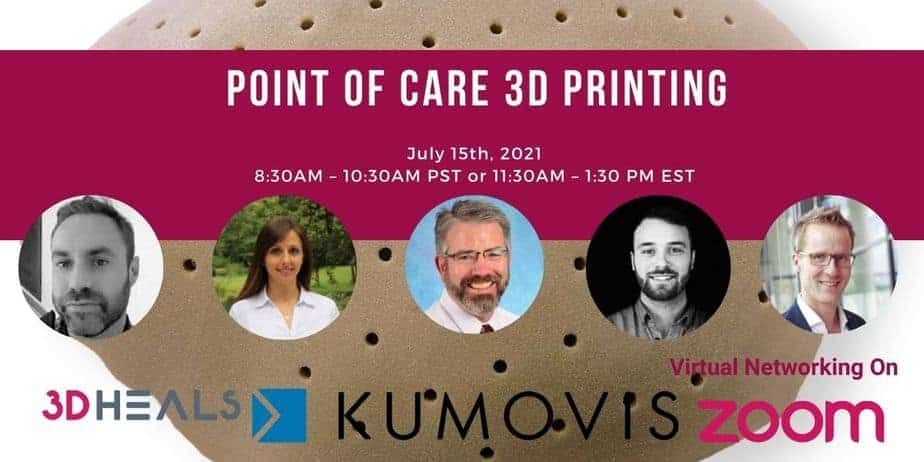Point of Care 3D Printing

Point of care 3D printing is becoming one of the biggest attractions in adopting 3D printing in healthcare systems because it demonstrates the ability to decentralize manufacturing personalized medical devices. The medical devices can range from anatomical modeling, implants, to surgical guides based on the latest updates from all over the world. However, for companies interested in expanding markets either locally or regionally, understanding the complex relationships among different players and regulations are critical. In this webinar, we invited an international panel of experts who had both clinical and industrial experiences in point of care 3D printing to have an exciting conversation that we have all been waiting for.
Speakers:
Andrew Woodward

Andrew has been working in medical imaging for 38 years and holds ARRT certifications in Radiography, Computed Tomography and Quality Management. After 30 years of teaching medical imaging, Andrew retired to join the Advanced Medical Imaging Lab (AMIL) at The University of North Carolina Medical Center in 2106. His experience in education, radiography, vascular interventional radiology, cardiac catheterization and computed tomography added a new perspective on how to expand the AMIL’s services. In 2017, Andrew provided proof of concept 3D printed models to his superiors and suggested that they implement a Point of Care 3D printing program that would be an integral part the image post-processing the AMIL was currently performing. The idea was well received and he began the process of procuring software and 3D printers to start production of models for patient education and surgical planning. Currently, the AMIL utilizes Mimics inPrint™ for creating the model files and the following printers: three Ultimaker S5; one Ultimaker 3 Extended and a Form3. Andrew has created models for complex pediatric spinal deformities; pediatric congenital heart defects, adult congenital heart disease, maxillofacial reconstruction and numerous orthopedic models for complex surgical cases. He is also involved in variety of research projects investigating the use of 3D printing of models for surgical training.
Martin Herzmann

Martin Herzmann started his medtech career in 1999 at Brainlab and was responsible for preoperative planning software. In 2007 he joined Ziehm Imaging and worked for another eight years as Marketing Director for medical capital equipment. In 2015, he joined the Materialise Medical division as Sales Manager and was responsible for German-speaking installations of planning software and services for medical 3D printing.
Since 2019, Martin Herzmann has been working as Business Development Manager at Kumovis. The company focuses on medical 3D printing with high-performance polymers and biodegradable polymers and launched the R1 3D printer in summer 2019: a system for additive manufacturing exclusively in medical technology. Customers include both hospitals and medical technology companies.
Paul Fotheringham

Paul Fotheringham is the founder of 3D LifePrints (3DLP) and is an experienced Technologist, Entrepreneur, and 3D printing expert who focuses on the medical sector. He holds a joint Bachelor of Science degree in Computer & Management Science from the University of Edinburgh. After graduating, he worked in over 10 countries including the US, UK, HK, Japan, and South Korea as an Enterprise Architect for organizations such as the London Stock Exchange, British Petroleum, Accenture and Macquarie Group. In 2012 he took up a post as Chief Technology Officer for a global Micro-finance organization in Kenya where he subsequently started 3DLP initially as a Social Enterprise in order to provide sustainable, affordable and suitable 3D printed prosthetics for developing world amputees. He currently overseas 3DLP’s European operations from Barcelona that provide a variety of innovative medical 3D printing products and services to medical institutions.
Daniel Crawford

Daniel Crawford is the Founder & Chief Strategy Officer of axial3D, a company creating automated solutions to make patient specific surgery routine practice in hospitals globally. Daniel graduated with a BSc Hons in Biomedical Engineering and an MSc in Medical Visualisation and Human Anatomy. He has over 10 years experience in medical device development and deployment into clinical settings, 7 of which are specifically related to medical 3D printing and automated applications. Daniel is responsible for the strategy within Axial3D, including its machine learning algorithms for use in creating 3D printed models from 2D medical scans.
Moderator:
Hannah Riedle

Hannah studied Mechanical Engineer at the Technical University of Munich, where she specialized in medical technology. During her following Ph.D. at the Friedrich-Alexander-University Erlangen-Nuremberg, her research focused on the creation of digital anatomical models, additive manufacturing thereof, and as well as biomechanical and medical testing. From the topic of her Ph.D., she derived a business model which resulted in the foundation of ANAMOS in July 2020, where she is now responsible for the operational business as well as the technical development. Hannah has been the Munich-based 3DHEALS community manager since June 2017.


 Duration
Duration